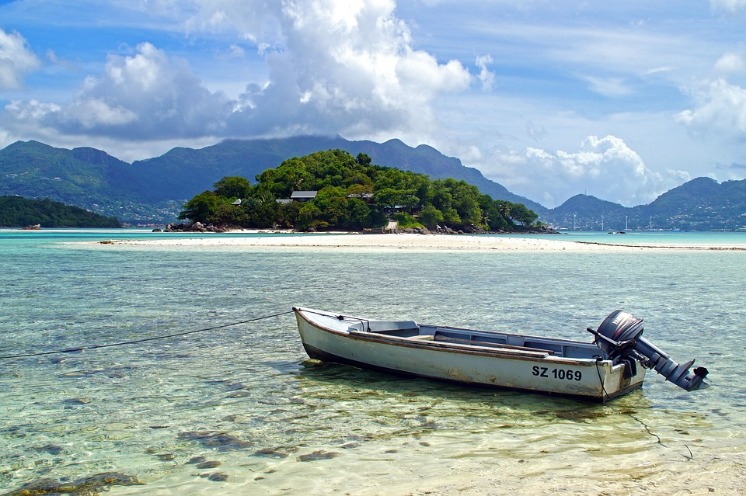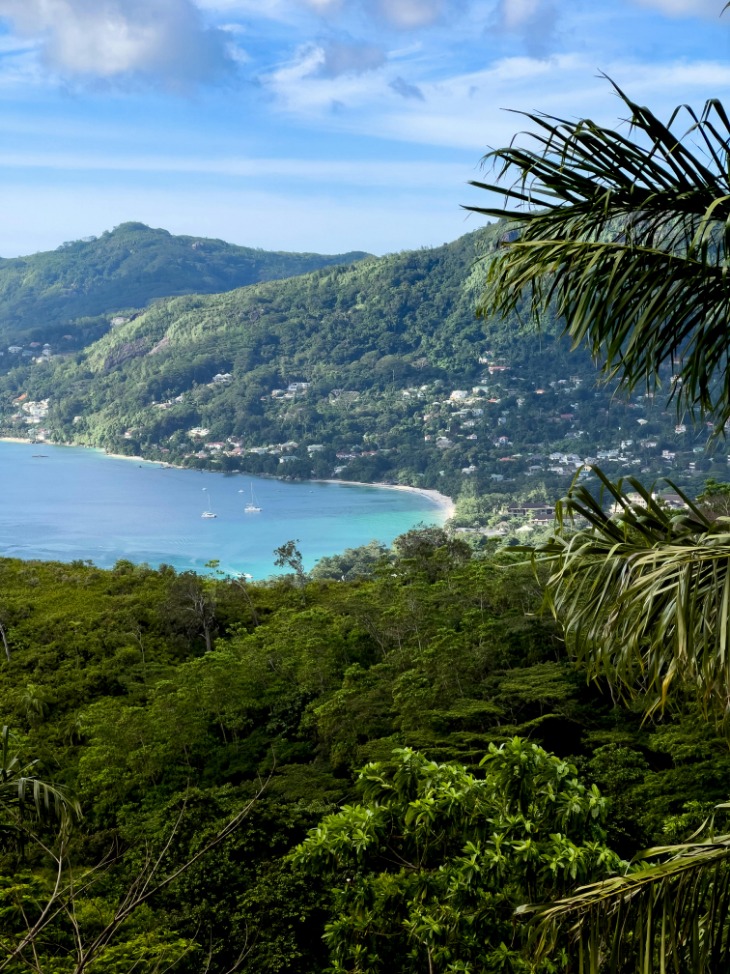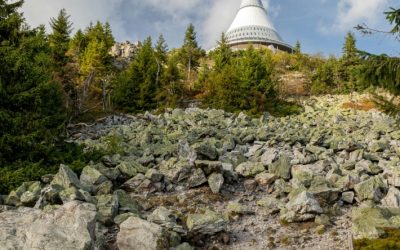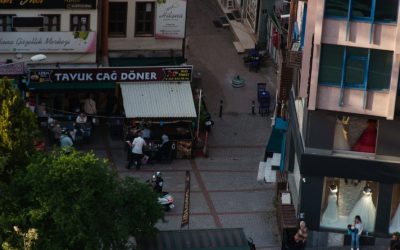Overview of Coco de Mer Seychelles
The Coco de Mer Seychelles is a remarkable and unique tropical palm native to the Seychelles islands, renowned for its extraordinary seed that resembles a wine bottle or a voluptuous figure. This rare and ancient species thrives in the lush, pristine rainforests of these islands, symbolizing the natural beauty and biodiversity of the region. Its distinctive appearance and cultural significance make it a captivating attraction for visitors and nature enthusiasts alike.
Geographical Location
The Coco de Mer Seychelles refers to a rare and iconic palm tree native exclusively to the Seychelles islands, famous for its distinctive and large seed, which resembles a coconut but with a unique shape. This impressive species is considered both a national symbol and a significant part of the local natural heritage, attracting botanists and tourists alike.
These trees are primarily found on two islands in the Seychelles: Praslin Island and Curieuse Island. The Coco de Mer trees thrive in the moist, tropical climate of these islands, particularly in the Vallée de Mai Nature Reserve on Praslin, which is a UNESCO World Heritage Site. This protected reserve offers a natural habitat where the palm can grow undisturbed, contributing to the biodiversity of the region.
- Location: Praslin Island and Curieuse Island in Seychelles
- Climate: Tropical with high humidity and ample rainfall
- Habitat: Dense, humid forests and nature reserves
- Significance: Unique endemic species, symbol of Seychelles, protected by conservation efforts
Significance in Seychelles
The Coco de Mer, scientifically known as Lodoicea maldivica, is a rare and iconic palm species native exclusively to the Seychelles islands. It is renowned for producing the world’s largest seed, which has a distinctive shape resembling a double coconut or a human buttock, making it a symbol of the archipelago’s unique biodiversity.
This extraordinary palm tree is highly significant to Seychelles due to its status as a national symbol and a vital part of the islands’ natural heritage. The Coco de Mer attracts many visitors and researchers, highlighting the importance of conservation efforts to protect this species from threats such as habitat loss and overharvesting. It also plays a crucial role in the local ecosystem, supporting various wildlife and maintaining ecological balance.
Historically, the Coco de Mer has been a source of cultural value and intrigue, often associated with legends and mystique. Its rarity and unique characteristics have made it a prized collector’s item and an emblem of Seychelles’ natural beauty, fostering national pride and promoting environmental awareness within the country.
Unique Botanical Features
The Coco de Mer Seychelles is a remarkable and iconic palm tree species native exclusively to the Seychelles islands. Known for its distinctive and enormous seeds, the tree stands as a symbol of the island’s unique natural heritage. This palm is part of the Arecaceae family and has adapted to the island’s specific climatic conditions, thriving in the lush, humid environments of the Seychelles.
One of the most unique botanical features of the Coco de Mer is its seed, considered the largest seed in the plant kingdom. These seeds can reach up to 30 centimeters in diameter and weigh as much as 30 kilograms. The seed’s shape resembles a double coconut or a depicting a pair of hips, which has historically led to various myths and legends. The tree itself can grow up to 25 meters tall, with a crown of palmate leaves that can extend more than 4 meters across. Its distinctive trunk is often straight and sturdy, supporting the weight of these massive seeds, which develop on the female palm’s flower structures.
The leaves of the Coco de Mer are highly palmate, with multiple leaflets radiating from a central point, creating a fan-like appearance. The flowers of the tree are pollinated by wind and insects, with male and female flowers occurring on separate trees, making it a monoecious species. The unique botanical features of the Coco de Mer make it a fascinating subject of study and a cherished emblem of the Seychelles’ rich biodiversity.
Botanical Characteristics of Coco de Mer
The Coco de Mer, native to Seychelles, is renowned for its extraordinary botanical characteristics. This iconic palm species, scientifically known as Lodoicea maldivica, is distinguished by its massive, double-lobed seeds, which are among the largest and heaviest in the plant kingdom. The palm itself exhibits a unique crown of feathery fronds and a sturdy trunk that supports its distinctive seed production, making it a fascinating subject of botanical study and a symbol of Seychelles’ rich biodiversity.
Physical Description
The Coco de Mer, native to the Seychelles, is renowned for its distinctive physical features and botanical characteristics. It is a massive palm tree that can reach heights of up to 25 meters, with a robust trunk covered in a smooth, grayish-brown bark. The tree produces an enormous seed, known as the Coco de Mer nut, which is one of the largest seeds in the plant kingdom, weighing up to 30 kilograms and measuring about 50 centimeters in diameter. The seed has a unique shape resembling a double coconut, with two lobed halves connected at the base. Its leaves are large, pinnate fronds that can extend over 6 meters in length, with numerous leaflets that are pinnate and dark green. The overall appearance of the plant is characterized by its elegant, feather-like foliage and the impressive size of its seed, which plays a vital role in its identification and ecological significance in its native habitat of Seychelles’ humid, tropical forests.
Growth Habits and Lifecycle
The Coco de Mer palm, native to the Seychelles, is renowned for its distinctive botanical features and unique growth habits. This ancient palm species boasts large, fan-shaped leaves that can reach up to 10 meters in length, creating an impressive canopy. The trunk is solitary, stout, and can grow up to 25 meters tall, supporting the massive fronds above. The fruit of the Coco de Mer is its most notable characteristic, being the largest seed in the plant kingdom, weighing up to 30 kilograms and resembling a double coconut with a shape reminiscent of a pelvis.
Its growth habit is slow but steady, typical of many palm species, taking several decades to reach maturity. The palm thrives in the humid, tropical climate of the Seychelles, particularly on the islands of Praslin and Curieuse. The lifecycle begins with seed germination, which can take several months, after which the young palms develop their characteristic leaves. Reproductive maturity is usually achieved after 20 to 50 years, when the palm produces flowering stalks bearing both male and female flowers. Pollination occurs through wind and insects, leading to the development of the iconic large fruits. The Coco de Mer can live for over 200 years, gradually increasing in size and stature, and remains a symbol of the Seychelles’ natural heritage and botanical uniqueness.
Reproductive Process

The Coco de Mer, native to the Seychelles, is renowned for its unique botanical features and reproductive process. It is a massive seed-producing palm tree classified scientifically as Lodoicea maldivica. The tree is characterized by its robust trunk, which can reach up to 25 meters in height, and palmate compound leaves that extend horizontally, creating a distinctive canopy. The seed, or nut, of the Coco de Mer is the largest in the plant kingdom, weighing up to 20 kilograms and measuring up to 50 centimeters in diameter, with a shape resembling a double coconut or a pair of rounded lobes. This distinctive shape is one of the most notable botanical features of the species.
Reproductively, the Coco de Mer is dioecious, meaning individual trees are either male or female. Pollination occurs primarily through wind and insect activity, with male trees producing large catkins that release pollen which is carried to female trees. Once pollinated, female trees develop the enormous seeds over a period of about three years. The seeds grow within a thick fleshy coat and drop to the ground when mature. Natural dispersal of the seeds is facilitated by gravity and animal interactions, notably by giant tortoises that once contributed to seed spreading. The reproductive process is slow, and the trees can live for over a hundred years, taking about 20 to 25 years to reach reproductive maturity. The uniqueness of its botanical features and reproductive cycle solidify the Coco de Mer as a symbol of Seychelles’ natural heritage.
Ecological Importance
The coco de mer, native to the Seychelles, plays a crucial role in maintaining the island’s unique ecological balance. As one of the most iconic and rarest nuts in the world, it provides essential habitat and food sources for various wildlife species. Its presence highlights the importance of conserving this delicate ecosystem to preserve the rich biodiversity of the Seychelles islands.
Habitat and Ecosystem Role
The coco de mer is a rare and unique palm species native to the Seychelles, playing a vital role in its ecosystem. It contributes significantly to local biodiversity and supports various forms of life within its habitat. Its ecological importance extends beyond just beauty, influencing environmental stability and ecological balance in its native regions.
In their habitat, coco de mer palms provide food and shelter for numerous animals, including birds and insects. The large seeds, which are among the heaviest in the plant kingdom, require specific dispersal mechanisms often involving giant tortoises or other native fauna, highlighting their integral ecological relationship.
- Habitat: The coco de mer primarily thrives in the lowland and montane forests of the Seychelles, particularly on islands such as Praslin and Curieuse. These environments offer the warm, moist, and well-drained conditions ideal for its growth.
- Role in Ecosystem:
- Seed Dispersal: The seeds are dispersed by animals like the native giant tortoises, which swallow and carry them across the landscape, facilitating plant propagation.
- Food Source: The seeds and the surrounding palm tissues are consumed by various animals, supporting local food webs.
- Habitat Support: The palms contribute to forest structure, providing shade and habitat for other species.
Relationship with Pollinators
The coco de mer palm, native to the Seychelles, plays a vital role in maintaining the local ecological balance. Its unique seeds and towering presence provide essential habitat and food sources for various native species, supporting biodiversity in the island’s fragile ecosystems. The tree’s interactions with pollinators are crucial for its reproduction, ensuring the survival of this rare plant.
Pollinators such as insects, specifically beetles and certain types of flies, are attracted to the flower’s scent and structure. During pollination, these insects transfer pollen from male to female flowers, facilitating seed production. This mutual relationship benefits both the pollinators, which gain nutrition, and the coco de mer, which relies on effective pollination for propagation.
Protecting the coco de mer and its pollinators is essential for maintaining Seychelles’ unique biodiversity. The planet’s ecological stability depends on preserving these intricate relationships, highlighting the importance of conservation efforts to safeguard this iconic species and its vital role in the ecosystem.
Seed Dispersal Mechanisms
The coco de mer, a unique palm species native to Seychelles, plays a vital role in its ecosystem through its seed dispersal mechanisms. Its large, distinctive seeds are a crucial part of the island’s biodiversity, supporting a variety of plant and animal communities. Seed dispersal is primarily facilitated by native animals such as giant tortoises and birds that consume the seeds and transport them away from the parent tree. This process ensures healthy genetic diversity and promotes the growth of new trees in diverse locations, contributing to forest regeneration. Additionally, the dispersal of coco de mer seeds helps maintain ecological balance on the islands by enabling the spread of vegetation across different habitats, preventing overcrowding, and supporting the complex web of life. Overall, the seed dispersal mechanisms of the coco de mer are fundamental to sustaining Seychelles’ unique ecosystems and conserving its endemic species.
Conservation Status and Efforts
The conservation status and efforts surrounding the coco de mer in Seychelles highlight the importance of preserving this unique and endangered palm species. Known for its large, distinctively shaped nuts, the coco de mer is a symbol of the Seychelles islands and plays a vital role in their ecosystem. Recognizing its vulnerability, conservation initiatives aim to protect the coco de mer from habitat loss, overharvesting, and illegal trade, ensuring that future generations can continue to appreciate this natural marvel.
Threats to Coco de Mer
The coco de mer, a rare and iconic palm native to Seychelles, is considered critically endangered due to a combination of environmental threats and human activities. Its unique double-lobed seed and restricted habitat make it especially vulnerable, prompting international concern for its conservation.
Various efforts have been implemented to protect this extraordinary species. These include establishing protected areas such as Vallée de Mai Nature Reserve and Praslin National Park, where the coco de mer thrives naturally. Additionally, botanical gardens and conservation programs focus on ex-situ cultivation to bolster its populations and ensure genetic diversity. International organizations also promote awareness and enforce regulations to prevent illegal harvesting and smuggling of these seeds.
However, the coco de mer faces ongoing threats which jeopardize its survival. These include habitat destruction due to agriculture, urban development, and tourism expansion. Invasive species can compete with native flora, while climate change influences its reproductive cycle and seed dispersal. Poaching and illegal trade of the seeds further threaten wild populations, making conservation efforts all the more critical.
- Habitat loss from human development
- Illegal harvesting and exploitation
- Invasive plant and animal species
- Climate change impacting growth and seed dispersal
- Limited natural range and population size
Protected Areas and Reserves
The coco de mer, native to the Seychelles, is a rare and unique palm species known for producing the largest seeds in the plant kingdom. Its conservation status is considered vulnerable due to habitat loss, overharvesting, and illegal collection from the wild. Preservation efforts are focused on protecting its natural habitat and regulating collection to ensure the species’ survival. Various conservation organizations work in collaboration with the Seychelles government to implement sustainable practices and raise awareness about the importance of conserving this iconic palm. Protected areas, such as Praslin National Park and Vallée de Mai Nature Reserve, play a crucial role in safeguarding the coco de mer, providing a protected environment where the species can thrive. These reserves serve not only as vital habitats but also as centers for research, eco-tourism, and environmental education, all aimed at maintaining the delicate ecological balance and ensuring the long-term conservation of the coco de mer in the Seychelles.
Conservation Programs and Initiatives
The coco de mer, a rare and iconic palm native to the Seychelles, is classified as endangered due to habitat loss, overharvesting, and limited distribution. Conservation efforts are crucial to ensure its survival and protect the unique biodiversity of the islands.
Various conservation programs and initiatives have been implemented to preserve the coco de mer. These include establishing protected areas, specimen cultivation, and raising awareness among local communities and tourists about the importance of conserving this species. Collaborative efforts between government agencies, environmental organizations, and research institutions aim to monitor populations, prevent illegal collection, and promote sustainable practices.
- Establishment of Morne Seychelles National Park and Vallée de Mai Nature Reserve to protect natural habitats.
- Regulations on harvesting and trade to prevent illegal and unsustainable collection of coco de mer seeds and nuts.
- Propagation projects in botanical gardens and nurseries to increase population numbers and reduce pressure on wild populations.
- Research initiatives focused on understanding the species’ ecology, reproductive biology, and threats.
- Environmental education campaigns to inform local communities and visitors about the significance of the coco de mer and the need for conservation.
Cultural and Economic Significance
The coco de mer, native to the Seychelles, holds remarkable cultural and economic significance for the islands. As one of the rarest and most unique palms in the world, it has become a symbol of Seychelles’ natural heritage. Its distinctive large seeds attract tourists and researchers alike, contributing to the local economy. Additionally, the coco de mer plays an important role in traditional practices and environmental preservation, embodying the cultural identity of the Seychellois people.
Historical Uses and Beliefs
The coco de mer, native to the Seychelles, holds profound cultural and economic significance for the islands. Its unique and large seeds have long been a symbol of local identity and natural heritage, often featured in traditional ceremonies and folklore. Economically, the coco de mer has contributed to tourism and conservation efforts, making it a valuable resource that attracts visitors and researchers interested in its rarity and biological importance.
Historically, the coco de mer was highly prized by explorers and collectors due to its distinct double-lobed shape and mysterious origins. Ancient sailors and traders valued it not only for its uniqueness but also for its purported mystical properties. The seed was often associated with fertility and prosperity, leading to myths and beliefs that reinforced its sacred status among local communities.
Beliefs surrounding the coco de mer reflect its revered status in Seychelles culture. It was historically regarded as a symbol of fertility and good fortune, often used in rituals and as amulets. Some legends suggest that the seed’s unusual shape resembles a female pelvis, further emphasizing its connection to fertility and life-giving powers. Its rarity and mythological significance have helped preserve its cultural importance over centuries, making it a cherished emblem of Seychelles’ natural and spiritual heritage.
Tourism and Souvenir Trade
The Coco de Mer palm, endemic to Seychelles, holds profound cultural and economic significance for the islands. It symbolizes the unique biodiversity of Seychelles and is often regarded as a national treasure, representing the natural heritage and identity of the nation. Economically, the coco de mer is a vital resource, notably through its role in tourism and the souvenir trade, contributing to the islands’ income and global recognition.
Tourism in Seychelles heavily revolves around its distinctive flora and fauna, with the coco de mer being a major attraction. Visitors are eager to see the largest seed in the world and learn about its mythological and ecological importance. Many eco-friendly tours and educational programs feature the coco de mer, enhancing visitors’ experience and awareness about conservation efforts.
The souvenir trade involving coco de mer is a significant source of income, although it is strictly regulated to prevent illegal harvesting and trade. Authentic coco de mer souvenirs, such as carved seeds and jewelry, are popular among tourists and collectors worldwide. This trade supports local artisans and conservation initiatives, emphasizing sustainable practices to preserve this unique species for future generations.
- Symbol of Seychelles’ natural heritage and endemic biodiversity
- Major attraction for eco-tourism, boosting local economy
- Source of souvenirs and handcrafted items for tourists
- Important part of conservation efforts to prevent illegal trade
Legal Regulations and Trade Restrictions
The coco de mer palm, native to the Seychelles, holds significant cultural and economic importance for the archipelago. Its unique, large fan-shaped seeds are regarded as symbols of fertility and nature’s rarity, featuring prominently in local traditions and beliefs. Economically, the coco de mer is a vital component of Seychelles’ tourism industry, attracting visitors eager to see the extraordinary seeds and learn about their ecological significance. The sale and display of coco de mer seeds also generate substantial revenue, contributing to the nation’s economy.
Legal regulations surrounding the coco de mer are stringent, given its status as a protected species. The Seychelles government enforces strict laws to prevent illegal harvesting and exportation, with the Convention on International Trade in Endangered Species of Wild Fauna and Flora (CITES) listing the coco de mer under Appendix I. Such measures aim to conserve this rare palm and its seeds by controlling trade activities. International trade restrictions are tight, requiring permits and certifications to ensure that any commercial transaction complies with conservation efforts, thereby safeguarding the species’ survival for future generations.
Scientific Research and Discoveries
The coco de mer, a rare and fascinating palm native to the Seychelles, has long captivated scientists and explorers alike. Its unique seed, the largest of any plant, has inspired curiosity and numerous research studies into its growth, ecological significance, and cultural importance. Scientific research on the coco de mer continues to uncover insights into its evolutionary history and the delicate balance of island ecosystems where it thrives.
Notable Studies and Findings
The coco de mer, also known as the “luck nut,” is a unique and fascinating species of palm native to the Seychelles islands. Scientific research has extensively studied this extraordinary palm due to its distinctive large seeds, which are the heaviest seeds in the plant kingdom. Notable studies have focused on the coco de mer’s reproductive biology, revealing that its large, double-lobed seeds have evolved to disperse across water, aiding in the species’ survival in its isolated habitat.
Recent discoveries have highlighted the coco de mer’s ecological significance and its relationship with the island’s environment. Research indicates that the palm plays a vital role in maintaining the local ecosystem, providing habitat and food for various animal species. Genetic studies have also explored the genetic diversity within coco de mer populations, informing conservation efforts to protect this endangered species from threats such as habitat loss and poaching.
Moreover, scientific investigations into the physiological aspects of the palm have uncovered its remarkable adaptations to the Seychelles’ climate, including adaptations in its leaf structure and water-use efficiency. These findings contribute to understanding how the coco de mer has persisted for millions of years in such a specialized niche, and they underscore the importance of ongoing research to preserve this botanical wonder for future generations.
Potential Uses and Benefits
The coco de mer, also known as the “double coconut,” is a rare and fascinating species native to the Seychelles islands. Scientific research has focused on understanding its unique biological characteristics, including its large seed size and reproductive ecology. Discoveries about its growth patterns and genetic makeup have highlighted its significance as one of the most extraordinary palm species in the world. The coco de mer’s unique biological features have attracted botanists and conservationists alike, emphasizing the importance of protecting this ancient plant.
Potential uses of the coco de mer extend beyond its natural habitat. Its large, resilient seeds have inspired studies into sustainable harvesting and cultivation techniques. Additionally, the nuts themselves are highly valuable as ornamental objects and collectibles, which fuels ecotourism and raises awareness for conservation efforts. Researchers are exploring the possibility of cultivating coco de mer trees outside the Seychelles to support both conservation and commercial interests, minimizing pressure on wild populations.
The benefits of studying and preserving the coco de mer are multifaceted. Protecting this species helps maintain the ecological balance of Seychelles’ coastal forests. It also provides insights into the resilience and adaptation of island flora, informing conservation strategies worldwide. Furthermore, the coco de mer’s cultural and aesthetic significance boosts ecotourism, supporting local communities economically while fostering global awareness of biodiversity preservation. Overall, the continued scientific research and responsible utilization of the coco de mer hold promise for enhancing biodiversity conservation, ecological education, and sustainable development.
Future Research Directions
The coco de mer, native to the Seychelles islands, is one of the most enigmatic and fascinating plant species in the world. As a rare palm tree known for its unique and enormous seeds, scientific research has significantly contributed to understanding its biology, ecology, and conservation needs. Recent discoveries have shed light on its reproductive mechanisms, evolutionary history, and ecological importance within its native habitat.
Future research directions for coco de mer could focus on several key areas to ensure its continued survival and deepen scientific knowledge:
- Genetic Analysis and Conservation Genetics – exploring genetic diversity within populations to guide conservation strategies
- Ecological Interactions – studying relationships with pollinators, seed dispersers, and their role in the island ecosystem
- Climate Change Impact – assessing how shifting climate patterns affect growth, reproduction, and habitat suitability
- Propagation and Cultivation Techniques – developing methods to bolster populations both in situ and ex situ
- Historical and Paleobotanical Studies – investigating the evolutionary history and fossil record of the species to understand its past fluctuations and resilience





0 Comments